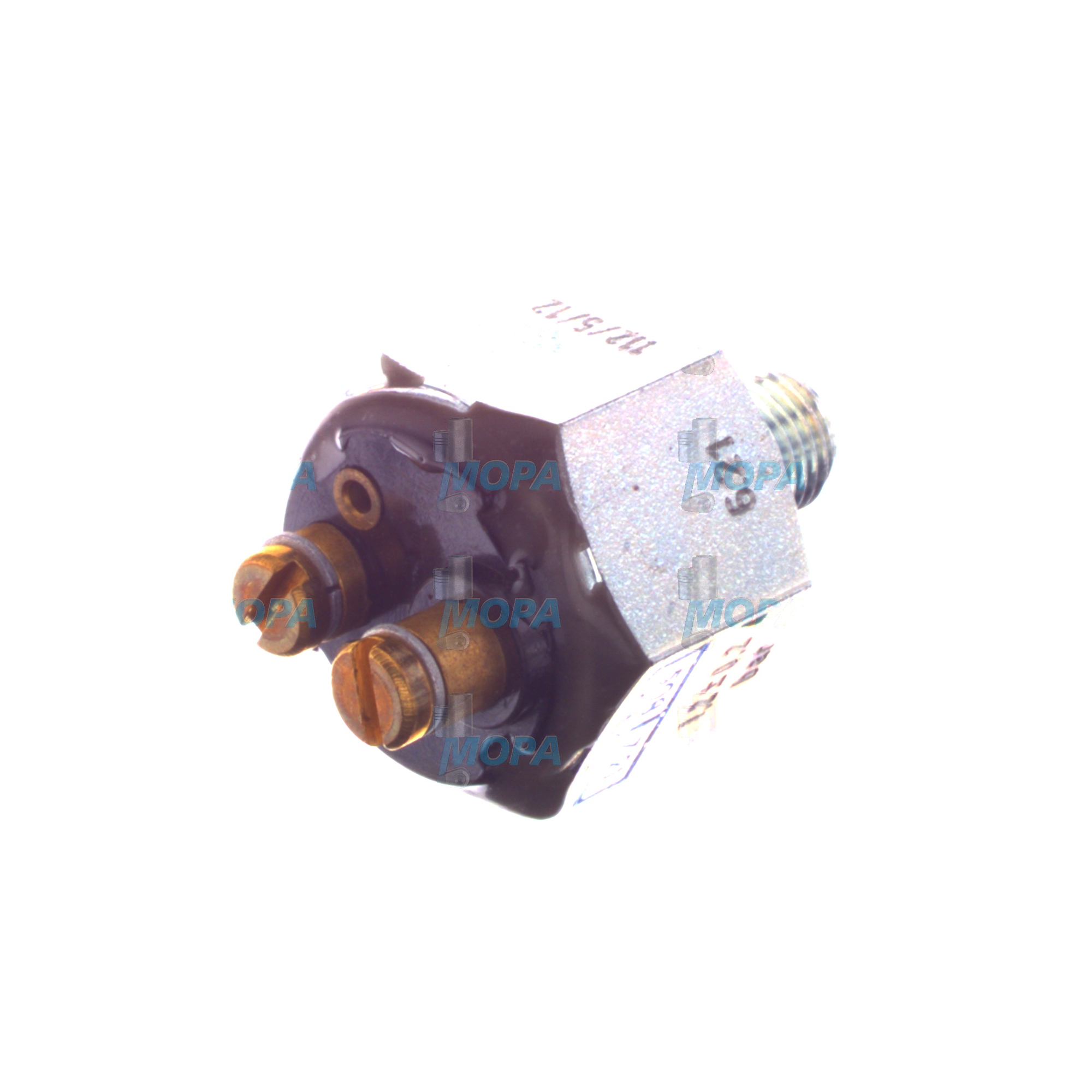OIL PRESSURE SWITCH for Electric Components and Switches
Electric components and switches form the nerve center of modern engines. They sense, measure, and control vital parameters, ensuring that power units start reliably, run efficiently, and shut down safely when needed. Within this category, the OIL PRESSURE SWITCH stands out as a critical safeguard. It delivers a simple, decisive signal that protects bearings, turbochargers, and the cranktrain from lubrication failure—one of the most costly causes of downtime in marine and power generation applications.
From compact gensets to large-bore propulsion units, the right selection of electric components and switches determines how well an engine communicates with its control system. High-integrity devices—pressure switches, temperature switches, relays, solenoids, level sensors, and speed pickups—coordinate with the ECU or panel logic to trigger alarms and protective actions. Among them, an accurately calibrated OIL PRESSURE SWITCH provides the earliest warning of oil system anomalies, making it indispensable for diesel engine and gas engine safety.
Technical function of OIL PRESSURE SWITCH in diesel engine and marine engine control
An OIL PRESSURE SWITCH is a pressure-actuated device that changes electrical state at a defined oil pressure threshold. In a diesel engine or marine engine, it is typically installed in the main oil gallery or near the filter head, where it detects system pressure as soon as the engine cranks. Depending on the design, the switch may be normally open (closes when oil pressure rises above the setpoint) or normally closed (opens when pressure builds). The changeover sends a binary signal to the control unit, alarm panel, or PLC, confirming that lubrication is established—or, in fault conditions, that it is not.
Beyond simple on/off behavior, quality switches incorporate defined hysteresis to avoid chatter around the setpoint, vibration-resistant contacts, and sealed housings with IP67–IP69K ratings. Materials such as nickel-plated brass or stainless steel resist corrosion in saline atmospheres. Thread interfaces (e.g., NPT, BSP, metric) and connector options (spade, Deutsch, AMP) ensure clean integration into existing harnesses. Response time is short, enabling rapid alarm/shutdown decisions that prevent metal-to-metal contact on start-up. In many installations, the OIL PRESSURE SWITCH works alongside a pressure transmitter; the transmitter feeds trend data to the ECU, while the switch provides a categorical safety input.
When specified as OIL PRESSURE SWITCH OEM parts, setpoints align precisely with engine builder logic—for example, low oil pressure alarm at idle vs. at rated speed, where minimum pressure differs. This coordination supports consistent alarm management and minimizes nuisance trips, preserving uptime while protecting critical components.
- · Precise setpoints matched to engine control logic.
- · High ingress protection for harsh marine environments.
- · Vibration-resistant construction for long service life.
- · Corrosion-resistant metals and plated housings.
- · Standard threads and connectors for fast replacement.
- · Defined hysteresis to prevent contact chatter.
- · Compatibility with diesel engine, gas engine, and marine engine panels.
- · Clear electrical states for reliable alarm and shutdown circuits.
Importance of OIL PRESSURE SWITCH and electric switches for engine reliability
Reliable lubrication confirmation is non-negotiable. If an OIL PRESSURE SWITCH fails to actuate, actuates late, or drifts from its calibrated setpoint, the control system may not react in time to protect bearings, camshaft lobes, or piston cooling nozzles. Conversely, false low-pressure signals can trigger unnecessary shutdowns that disrupt voyages or production schedules. Wear, contact oxidation, seal degradation, and thermal cycling are the main failure drivers. In marine engine service, salt, humidity, and vibration amplify these stresses, which is why robust electric components and switches are central to availability targets.
A well-maintained switch network underpins safe start interlocks, auto-shutdown routines, and post-lube sequences. With correct devices in place, operators can confidently meet class requirements, maintain stable lube oil film at all loads, and extend the service life of rotating assemblies. Routine testing—verifying state change at pressure, inspecting connectors, and checking harness integrity—keeps the signal chain healthy and prevents slow-developing issues from turning into costly incidents.
Advantages of OEM spare parts for Electric components and switches
Selecting OEM spare parts for electric components and switches reduces risk across performance, reliability, and lifecycle cost. Dimensional accuracy, calibrated setpoints, and documented electrical characteristics ensure that replacements behave exactly as specified by the engine’s control logic. This consistency preserves alarm thresholds, shutdown timing, and start interlocks without reprogramming or field rework.
Quality-controlled manufacturing and full traceability contribute to predictable service life. Materials are chosen to match temperature cycles, oil chemistry, and vibration levels typical of propulsion and power generation duty. Compliance with EMC and safety standards protects surrounding electronics from interference and eliminates erratic signals. Ultimately, fewer spurious alarms and fewer unplanned stoppages translate into lower total cost of ownership and better fleet utilization.
OIL PRESSURE SWITCH OEM parts for marine engine and diesel engine applications
Using OIL PRESSURE SWITCH OEM parts maintains the intended setpoint at idle and rated speed, the correct hysteresis band, and the designed contact rating for your panel relays. In a marine engine room, this precision avoids nuisance trips during rough-sea load variations and ensures immediate shutdown on genuine lubrication loss. For power plants, it sustains availability targets by aligning switch behavior with the plant’s safety instrumented functions.
MOPA as a partner for OEM OIL PRESSURE SWITCH and electric switches
MOPA is an experienced and reliable partner for sourcing OEM spare parts across electric components and switches, including every major OIL PRESSURE SWITCH configuration used in diesel and gas engines. Customers rely on our speed in quotation and delivery, our focus on verifiable quality, and our secure trade processes—from part identification and documentation to packing and logistics. We support marine engine operators, shipowners, and power producers with worldwide availability, technical clarity on setpoints and interfaces, and safe handling that protects sensitive devices in transit.
Whether you need a single switch for a critical stopgap repair or a framework supply for fleet standardization, MOPA streamlines procurement and reduces downtime risk with proven OEM parts and dependable lead times.
Conclusion: OIL PRESSURE SWITCH and Electric components and switches
An OIL PRESSURE SWITCH is a small device with an outsized impact on engine safety and uptime. Within the broader category of electric components and switches, it provides the decisive signal that protects core engine assemblies from lubrication failures. Choosing OEM spare parts suitable for this category secures accurate switching behavior, consistent reliability, and cost-efficient operation across diesel and gas engine assets.



